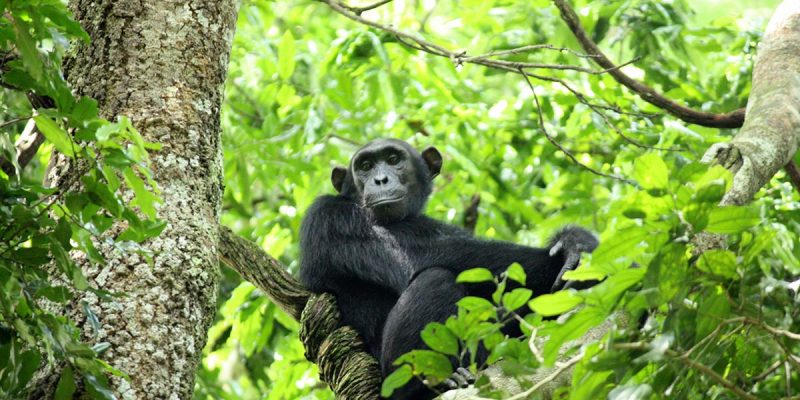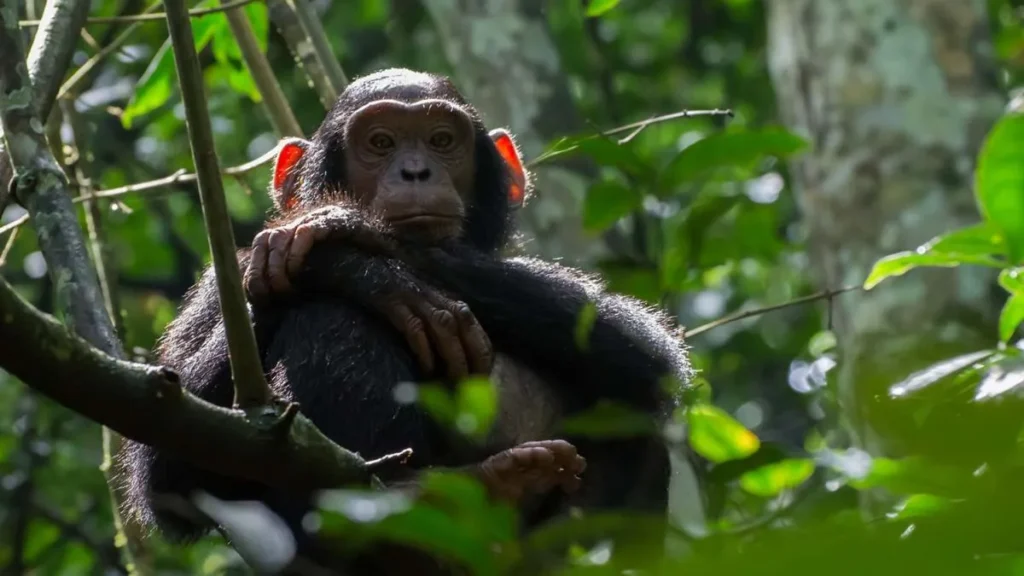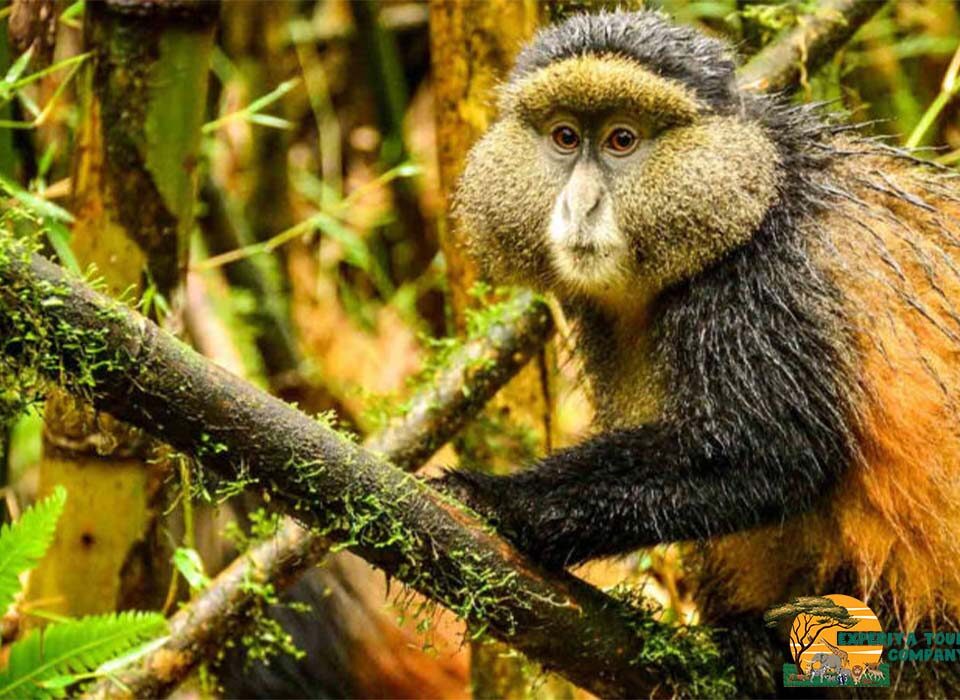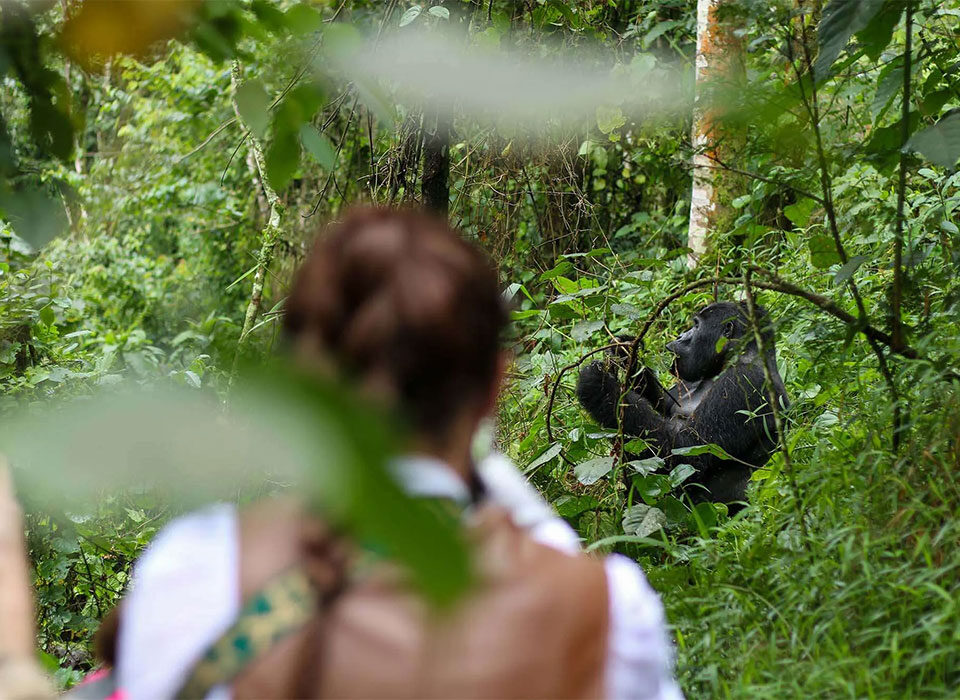
What’s the Best Time to Track Chimps in Uganda? | Uganda Safari Guide
October 24, 2025
Can I Combine Gorilla and Chimp Trekking in One Safari? | Uganda Safari Guide
October 24, 2025Are Chimpanzees Dangerous to Track? | Uganda Primate Safari Guide

Are Chimpanzees Dangerous to Track?
Chimpanzee tracking is one of the most extraordinary wildlife experiences you can have in Africa. Deep within Uganda’s lush tropical forests, travelers have the rare opportunity to walk alongside our closest relatives in the animal kingdom — the intelligent, emotional, and fascinating chimpanzees. Their behavior, social interactions, and expressive personalities make every encounter feel personal and profound. Yet, for many first-time visitors, one question naturally arises before venturing into the forest: “Are chimpanzees dangerous to track?”
It’s a fair question — after all, chimpanzees are strong, powerful wild animals capable of aggressive displays and unpredictable behavior. However, when approached responsibly and under proper guidance, chimpanzee tracking is remarkably safe. Uganda’s tracking experiences are carefully managed by professional guides and park rangers, and the chimpanzees you visit are part of habituated groups accustomed to human presence.
In this article, we’ll explore everything you need to know about the safety of chimpanzee tracking — from understanding chimpanzee behavior to how habituation works, the precautions taken by guides, and how you can enjoy a safe and unforgettable experience in the wild.
Understanding Chimpanzee Behavior
Chimpanzees (Pan troglodytes) are highly intelligent and social primates that share about 98% of their DNA with humans. They live in complex communities led by dominant males, with intricate social hierarchies, communication systems, and emotional bonds.
In the wild, chimpanzees are curious, expressive, and often playful, but they can also be territorial or defensive, especially when threatened. Their strength is immense — an adult male chimpanzee can be several times stronger than a human being. For this reason, the Uganda Wildlife Authority (UWA) and research teams take great care to ensure that tourists interact only with chimpanzees that are habituated to human presence.
Chimpanzees in Uganda’s main tracking destinations — such as Kibale National Park, Budongo Forest Reserve, Kalinzu Forest, and Kyambura Gorge — have been observed and gradually introduced to humans over several years. As a result, they are calm and comfortable around visitors, showing little to no aggression as long as people respect the established guidelines.
In essence, chimpanzees are not dangerous to track as long as you maintain proper behavior, follow your guide’s instructions, and understand that you’re entering their home as a respectful guest.
The Role of Habituation in Safety
The key factor that makes chimpanzee tracking safe is habituation — a process where researchers and rangers spend years gradually accustoming wild chimpanzees to human presence. This process is essential for conservation, research, and tourism, as it allows scientists to study the animals up close and visitors to observe them safely.
Chimpanzee habituation involves:
- Regular human contact: Rangers follow chimpanzee groups daily, maintaining a calm and consistent presence. Over time, the chimpanzees learn that humans are not a threat.
- Gradual exposure: The process starts with the chimps observing humans from a distance. As trust builds, the proximity increases until both sides are comfortable with each other’s presence.
- Monitoring behavior: Rangers carefully observe signs of stress or aggression and withdraw when necessary to avoid provoking fear.
In Kibale National Park, for example, habituation takes place over several years before a chimpanzee group is opened for tracking by tourists. This careful process ensures that by the time visitors arrive, the chimpanzees are used to humans walking nearby and show natural, relaxed behavior.
Because of habituation, you can watch chimpanzees feed, groom, or even play without them showing signs of fear or hostility. It’s one of the main reasons chimp tracking in Uganda is considered very safe compared to encountering unhabituated chimps in the wild.
Safety Precautions During Chimpanzee Tracking
While chimpanzee tracking is safe, it’s still a wild adventure that takes place in dense forest environments. Uganda Wildlife Authority and park guides implement strict safety measures to ensure both visitors and chimpanzees remain unharmed.
Here are the main safety rules and precautions you’ll follow:

1. Always Stay with Your Guide
Every chimpanzee trek is led by professional guides and armed rangers who know the forest intimately. They’re trained in primate behavior, navigation, and emergency response. Never wander off on your own — guides lead you along the safest trails and interpret the chimps’ body language to prevent risky encounters.
2. Maintain a Safe Distance
Visitors are required to stay at least 8 meters (26 feet) away from the chimpanzees at all times. This rule protects both you and the chimps from potential danger or disease transmission. Chimpanzees are susceptible to human illnesses, so keeping distance is a vital part of conservation ethics.
Even though chimps in habituated groups may come closer out of curiosity, you should never attempt to approach or touch them. If a chimp moves toward you, the guide may ask you to step back slowly to maintain a respectful space.
3. Stay Calm and Quiet
Chimpanzees are extremely perceptive. Loud noises, sudden movements, or aggressive gestures can make them anxious or defensive. Always remain calm, quiet, and composed during the trek. Speak in low tones and move slowly, especially when the chimps are nearby.
Your guide will often signal when to move, stop, or crouch to get the best view while keeping everyone safe.
4. Follow All Instructions from Rangers
Guides and rangers are trained professionals who understand chimpanzee behavior. They’ll brief you before the trek about how to behave in different situations. Following their directions is essential, especially if the chimps start showing signs of agitation — such as loud vocalizations, branch shaking, or chest-beating displays.
In rare cases where chimps show dominance behavior, guides will calmly ask visitors to lower their gaze or crouch down, signaling non-aggression.
5. No Food or Flash Photography
Never eat or drink near chimpanzees. The smell of food can attract their attention and disrupt their natural feeding behavior. Also, flash photography is strictly prohibited, as it can startle or irritate the animals.
Stick to natural light or low-light camera settings, and always ask your guide before taking photos.
6. Wear Proper Gear
Forests like Kibale and Budongo are humid and thick, with uneven ground and occasional insects. Wear long trousers, long-sleeved shirts, sturdy hiking boots, and carry insect repellent. Gloves can protect your hands from thorny vines, and a rain jacket is useful since showers can occur unexpectedly.
7. Health and Safety Requirements
Visitors showing symptoms of contagious illnesses such as colds, flu, or coughs may not be allowed to track chimpanzees. This is to protect the primates from human diseases, which they can easily contract.
Are There Real Risks?
Like any wildlife encounter, chimpanzee tracking involves minor risks, but serious incidents are extremely rare. The biggest challenges tend to be environmental rather than animal-related — slippery trails, dense vegetation, or fatigue during the hike.
Chimpanzee attacks on humans are exceedingly uncommon in Uganda’s parks. The few cases of chimp aggression documented in Africa typically involve wild, unhabituated groups or situations where chimps were provoked or cornered.
The chimpanzee groups you’ll visit in Uganda are accustomed to human presence and display calm, predictable behavior. As long as visitors follow the guidelines, the experience is entirely safe.
Comparing Chimpanzee Tracking to Gorilla Trekking
Travelers often compare chimpanzee tracking to gorilla trekking, and while both experiences involve meeting great apes in the wild, there are differences in movement and temperament. Gorillas are generally gentle and slower-moving, while chimpanzees are more energetic, spending time both in trees and on the ground.
This means tracking chimps can be more dynamic — they move faster, sometimes requiring longer treks to keep up. But the same safety principles apply in both activities: respect their space, stay with your guide, and follow all park regulations.
Why Uganda Is the Safest Destination for Chimpanzee Tracking
Uganda is recognized as one of Africa’s safest and most organized destinations for chimpanzee tourism. The Uganda Wildlife Authority ensures that chimp tracking follows strict conservation and safety standards.
Each visitor group is limited to a small number of people, ensuring a low-impact, controlled experience. Moreover, guides undergo regular training in wildlife interpretation, first aid, and emergency procedures.
Popular chimp-tracking sites like Kibale National Park, Budongo Forest, and Kalinzu Forest Reserve have excellent infrastructure, clear trails, and well-maintained facilities. The combination of expert guiding, well-habituated chimp groups, and strong safety regulations makes Uganda’s chimpanzee encounters some of the best in the world.
How to Stay Safe and Enjoy the Experience
To ensure a smooth and enjoyable chimpanzee tracking adventure, keep these simple tips in mind:
- Always walk quietly and follow the lead of your guide.
- Avoid wearing bright colors or perfumes that might attract insects or distract animals.
- Keep your camera ready, but never use flash.
- Carry drinking water and light snacks for energy (consumed away from the chimps).
- Listen closely during the pre-tracking briefing — it’s your best safety guide.
Above all, remember that chimpanzee tracking is not just about seeing the animals; it’s about understanding and respecting them in their natural habitat.
The Reward: An Unforgettable Connection
The first time you look into a chimpanzee’s eyes, you’ll realize why so many travelers describe this as a life-changing experience. There’s intelligence, curiosity, and a spark of familiarity in their gaze. Watching them communicate, care for their young, and express emotions reminds us how closely we’re connected to the natural world.
The experience feels safe because it’s built on decades of research, careful habituation, and responsible tourism. What you get in return is a memory that lasts a lifetime — not of danger, but of discovery, awe, and respect for one of nature’s most intelligent species.
Recommended Safari Operator: Experiya Tour Company
To ensure a safe, organized, and unforgettable chimpanzee tracking experience, it’s best to travel with a trusted tour operator that understands Uganda’s parks and wildlife deeply. Experiya Tour Company is one of Uganda’s leading safari experts, specializing in primate tracking adventures across Kibale, Budongo, and Queen Elizabeth National Parks.
With experienced guides, seamless logistics, and personalized itineraries, Experiya ensures that every detail of your trip — from obtaining permits to navigating forest trails — is handled professionally. Their guides are trained in chimpanzee behavior, ensuring that you remain safe while enjoying the most intimate and authentic encounters possible.
Whether you want to combine chimpanzee tracking with gorilla trekking, game drives, or scenic tours across Uganda, Experiya Tour Company makes it effortless and unforgettable.
With their expertise, your chimpanzee tracking journey becomes not just safe — but extraordinary.



